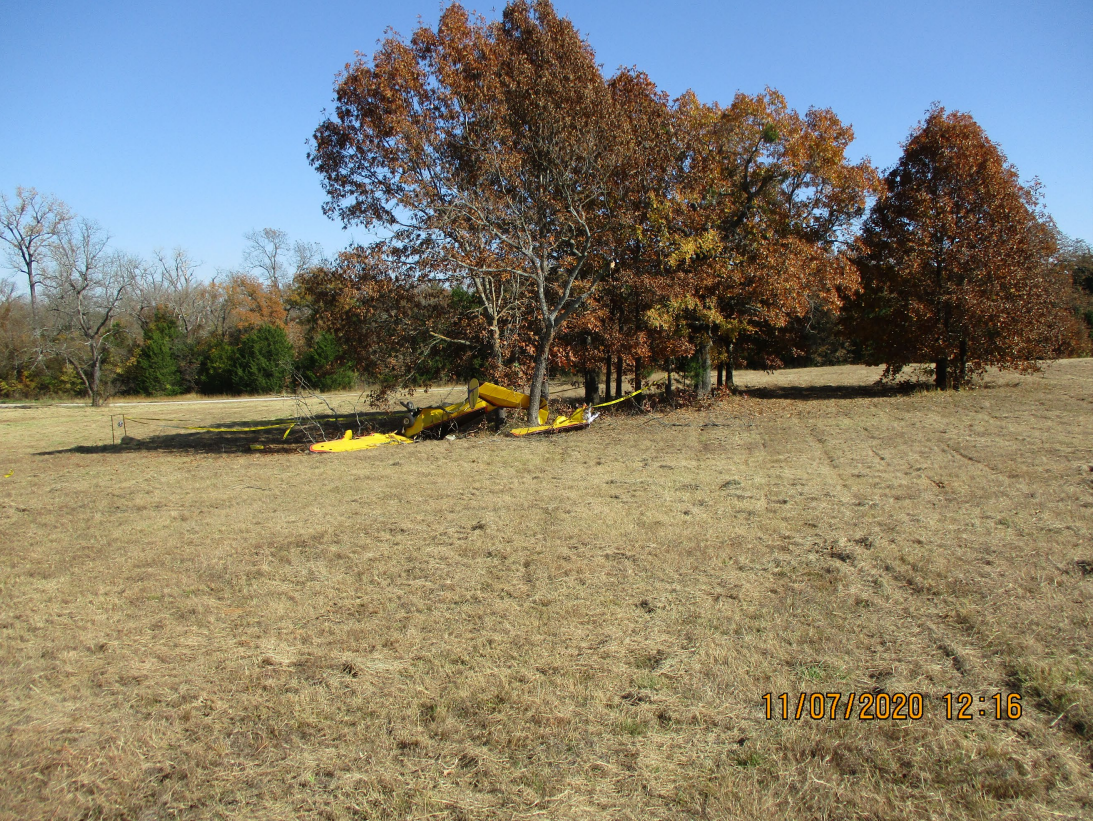
ASN Wikibase Occurrence # 244746
This information is added by users of ASN. Neither ASN nor the Flight Safety Foundation are responsible for the completeness or correctness of this information.
If you feel this information is incomplete or incorrect, you can submit corrected information.
| Date: | Saturday 7 November 2020 |
| Time: | 08:30 |
| Type: |  ERCO 415-C Ercoupe |
| Owner/operator: | Private |
| Registration: | N331BW |
| MSN: | 2091 |
| Year of manufacture: | 1946 |
| Total airframe hrs: | 1881 hours |
| Engine model: | Continental C-85-12 |
| Fatalities: | Fatalities: 0 / Occupants: 3 |
| Aircraft damage: | Substantial |
| Category: | Accident |
| Location: | SE of Ardmore Downtown Executive Airport (1F0), Ardmore, OK -
 United States of America United States of America
|
| Phase: | En route |
| Nature: | Private |
| Departure airport: | Ardmore Downtown Executive Airport, OK (1FO) |
| Ardmore Downtown Executive Airport, OK (1FO) | |
| Investigating agency: | NTSB |
| Confidence Rating: |
The pilot was performing a local flight with two passengers onboard the two-seat airplane. After flying two passes over a house, the pilot felt a 'slight shudder' and thought the airplane had flown through its own propeller wash. The engine then started to vibrate, and the pilot was not able to control the vibration by adjusting the throttle. The pilot set the airplane up in a glide configuration at which time the airplane banked to the left. The pilot applied full right aileron control, but it did not stop the left turn. The pilot was attempting to land the airplane in a field when it contacted a tree and came to rest inverted.
A postaccident examination revealed no preimpact mechanical malfunctions or failures with the airframe, including the flight controls, and engine that would have precluded normal operation. It was determined that the airplane was 48 pounds over its maximum gross weight when the pilot started the engine. A review of local area meteorological data showed that at the time of the accident, the airplane was likely operating in conditions conducive to the formation of serious icing conditions (at cruise power). The pilot reported he did not apply the carburetor heat when the engine began to lose power.
It is likely the engine sustained a partial loss of engine power in flight due to the formation of carburetor icing, which resulted in the attempted forced landing.
Probable Cause: The pilot's improper decision to takeoff with 3 persons in a 2-place airplane and over maximum gross weight, and his failure to apply carburetor heat when the airplane's engine experienced carburetor ice and a partial loss of power.
Sources:
NTSB CEN21LA047
Location
Images:


Photos: NTSB
Revision history:
| Date/time | Contributor | Updates |
|---|---|---|
| 08-Nov-2020 22:27 | Captain Adam | Added |
| 08-Nov-2020 23:34 | Geno | Updated [Time, Location, Source] |
| 09-Nov-2020 02:47 | RobertMB | Updated [Aircraft type, Registration, Cn, Operator, Total occupants, Nature, Source, Narrative] |
| 19-Feb-2021 19:33 | Anon. | Updated [Total occupants, Departure airport, Destination airport] |
| 07-Jul-2022 19:07 | ASN Update Bot | Updated [Time, Other fatalities, Departure airport, Destination airport, Source, Damage, Narrative, Category, Accident report] |
| 09-Jul-2022 00:13 | Captain Adam | Updated [Time, Other fatalities, Departure airport, Destination airport, Source, Narrative, Photo] |
| 09-Jul-2022 00:13 | Captain Adam | Updated [Photo] |
Corrections or additions? ... Edit this accident description
The Aviation Safety Network is an exclusive service provided by:


 ©2024 Flight Safety Foundation
©2024 Flight Safety Foundation